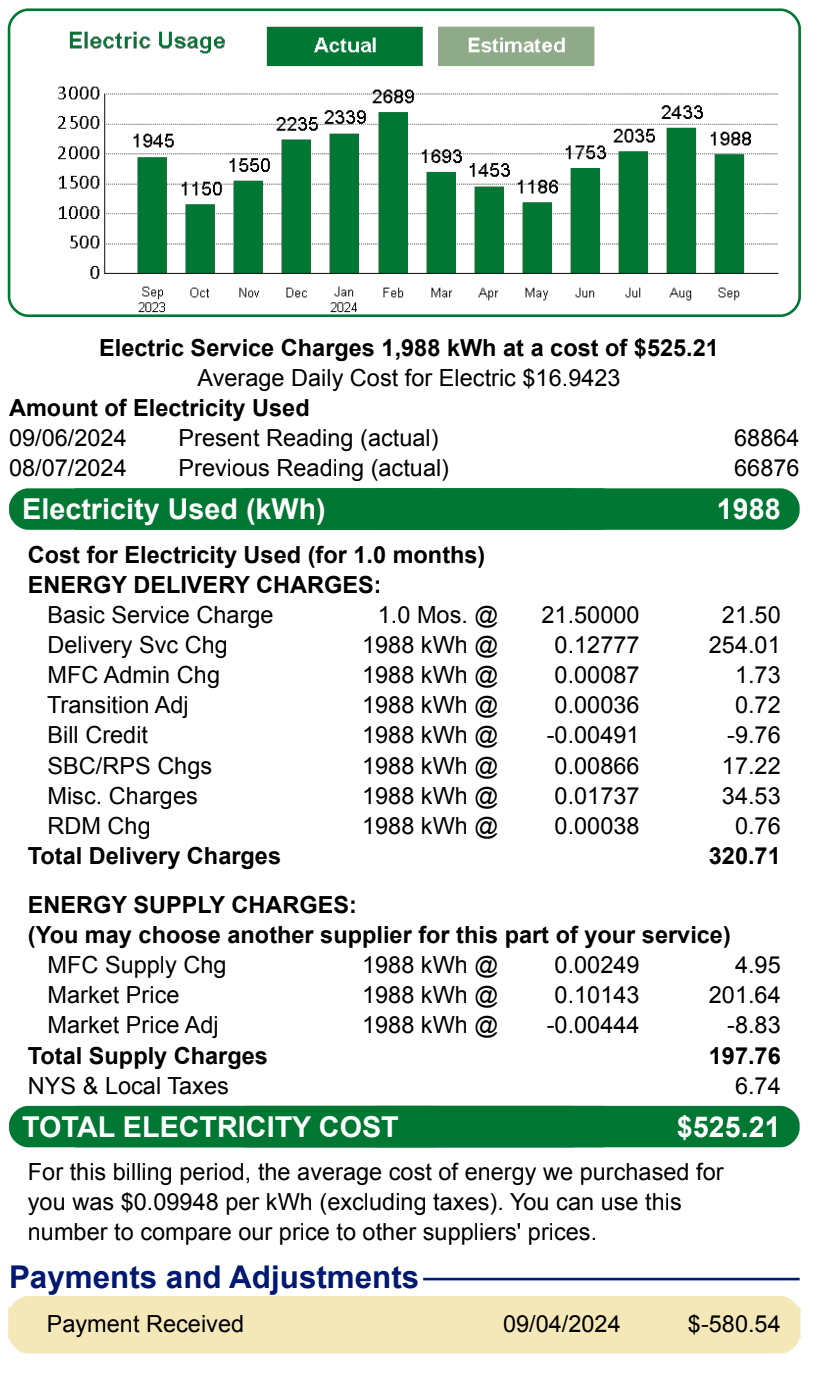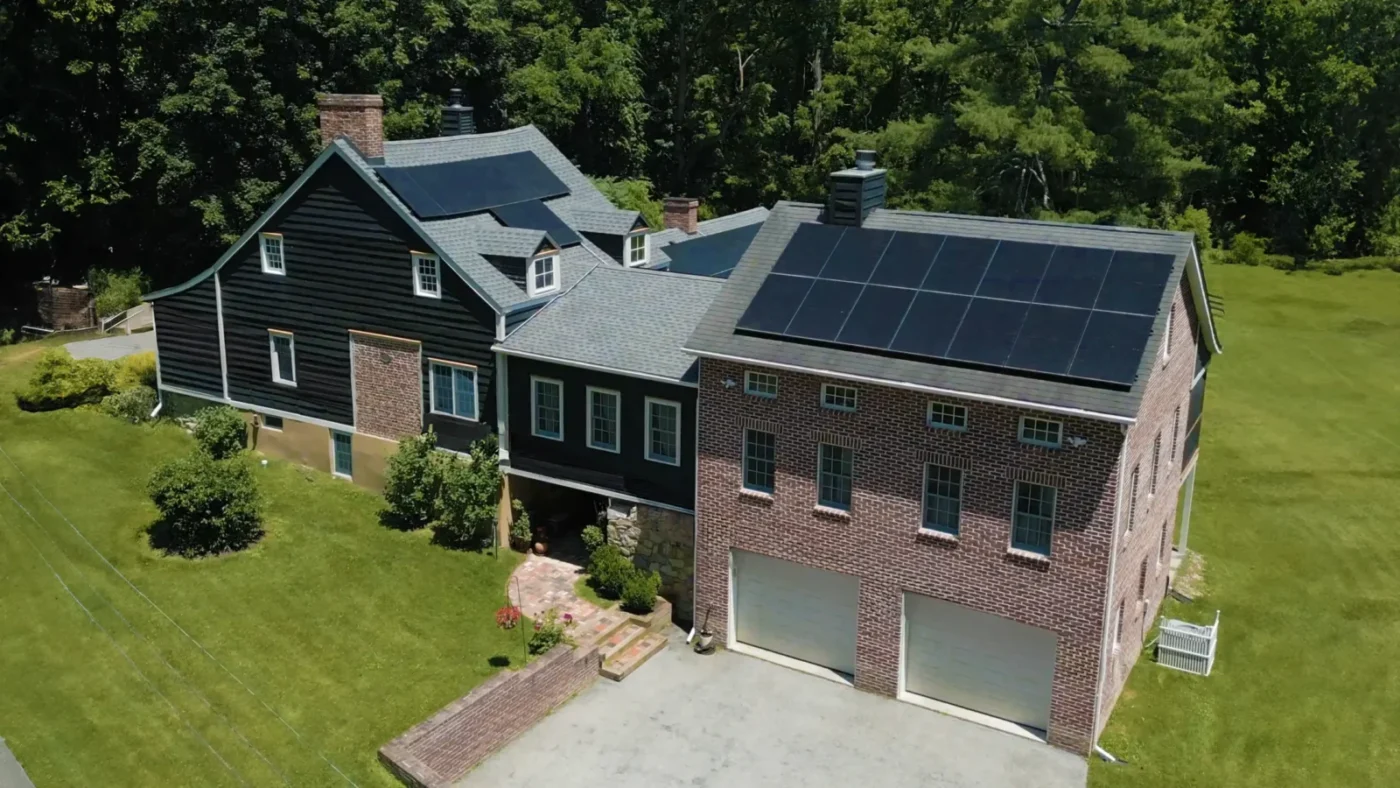We all know that electricity prices in New York are out of control. Every year, the cost to power our homes seems to go up with no clear explanation. Most people just pay their electric bills without even looking at more than the amount due because it’s too difficult to understand what each charge represents. But if you take a closer look, you’ll see a lot of hidden fees and confusing line items – especially in the delivery section. In this article we will shed some light (pun intended) on those obscure charges and give you a better understanding of where your money is going. So grab your most recent electric bill and follow along. This is going to be very eye opening.
Supply vs Delivery Charges:
The most surprising thing about how our electricity bills are structured is that they are broken up into two main categories – supply and delivery charges. They work exactly how they sound:
- Supply Charges: What you pay for the electricity you actually use
- Delivery Charges: What you pay to get that electricity to your home
But why is the cost to deliver electricity often higher than the cost of the electricity itself?
That’s because, on the top of rising energy prices, utility companies pass on the cost of maintaining and upgrading their aging infrastructure — maintaining power lines, upgrading aging equipment, repairing storm damage, and operating substations and grid systems, etc. — directly to their customers. Rates for supply charges can fluctuate up and down but delivery charges have predictably increased year after year. That means even if you use less power, delivery fees tend to rise steadily over time.
Hidden Delivery Charges In Plain Sight:
What is an SBC Charge?
The System Benefits Charge (SBC) is a fee added to your electric bill that helps fund New York State’s clean energy and public benefit programs. This electricity line item is mandated by the state and collected by your utility company and does not pay for electricity itself. The money goes toward:
- Energy efficiency programs for homes and businesses
- Assistance for low-income households
- Investments in renewable energy (like wind and solar)
- Research and development of clean energy technologies
While the SBC amount is usually small (typically a fraction of a cent per kilowatt-hour), it’s applied to every customer’s bill and adds up to millions of dollars statewide. The idea behind it is to help New York’s transition to a more sustainable and equitable energy system but for many homeowners, it’s just another fee on a bill that keeps going up.
The SBC charge is one of the funding sources used to support programs administered by NYSERDA, including the NY-Sun Residential and Commercial/Industrial Incentive Program, which provides rebates to homeowners who install solar. So in theory, you have been paying for someone else’s solar for quite some time.
Why are there “Miscellaneous Charges” In My Electric Bill?
Many utility companies now bundle several smaller fees under a vague “Misc. Charges” label instead of listing them individually to streamline the billing layout, but that doesn’t mean they’re minor. Each charge supports a different state-mandated program, and while they may seem small, they can quietly add up month after month. By not itemizing them, they make it harder for homeowners to read their electric bill and see exactly where their money is going and why their bills keep rising.
How to Calculate Your Real Cost per Kilowatt-Hour (kWh)
If you’ve ever tried to calculate your total cost per kWh in NY, it’s not as simple as it seems. In the sample bill provided below, you will see that after the breakdown of Delivery Charges, there is a section showing the cost of the electricity used. If you simply divide the Total Supply Charges ($197.76) by the number of kWh used (1,988kWh) you’d find your cost per kWh ($.09947).

Supply Cost: $197.76
Usage: 1,988 kWh
$197.76 ÷ 1,988 kWh = $0.099/kWh
But that’s ONLY your cost for supply. Remember, it costs even more to deliver that energy to you. So how do you calculate your true cost of electricity?
First you need to combine your supply and delivery charges. Add delivery:
$197.76 (supply) + $320.71 (delivery) = $518.47 total
Next you need to divide the total electricity cost by the kWh used.
This means every kWh used will cost $.26.
$518.47 ÷ 1,988 kWh = $0.26/kWh actual cost
By adding up the last 12 months on the bar graph below, which shows monthly usage for the last 13 months, you’d see this home was using 22,504kWh/year.
Now when we multiply their annual usage by the $.26 this power company is charging we would see this homeowner was spending $5,851.04/year for electricity.
22,504 x $.26 = $5,851.04
That means over the course of a 30 year mortgage they’d spend $175,531.20 on electricity! And that’s if their power company decides to never increase rates for 3 decades.
Why This Matters More in New York
- High Delivery Fees: Especially with providers like NYSEG, Con Edison, and National Grid.
- Rising Energy Rates: Historically increasing 4–5% annually.
- Stacked Fees: From storm surcharges to environmental taxes.
- Complicated Billing: Hard to understand, harder to reduce.
The Takeaway: Knowledge = Power
So now that you’ve peeled back the layers of your electric bill, it’s a little easier to see why so many New Yorkers feel like they’re losing control over their energy costs. These charges aren’t just a few cents here and there. They’re the result of outdated infrastructure upgrades, government programs you didn’t opt into, and a billing system that seems to be designed to keep you confused. But knowledge is power. The more you understand how your bill is built, the better positioned you are to take control of it. And the best way to do that? Start producing your own power at home. Because when you install solar, you don’t just eliminate your supply and delivery charges, you reduce how much you rely on the grid altogether.
Check How Much You Can Save
If you want to learn how much you can save on electricity by taking advantage of the latest federal and state incentives, complete 60-second survey below to see if your home qualifies for solar and request a free savings plan for your home.


